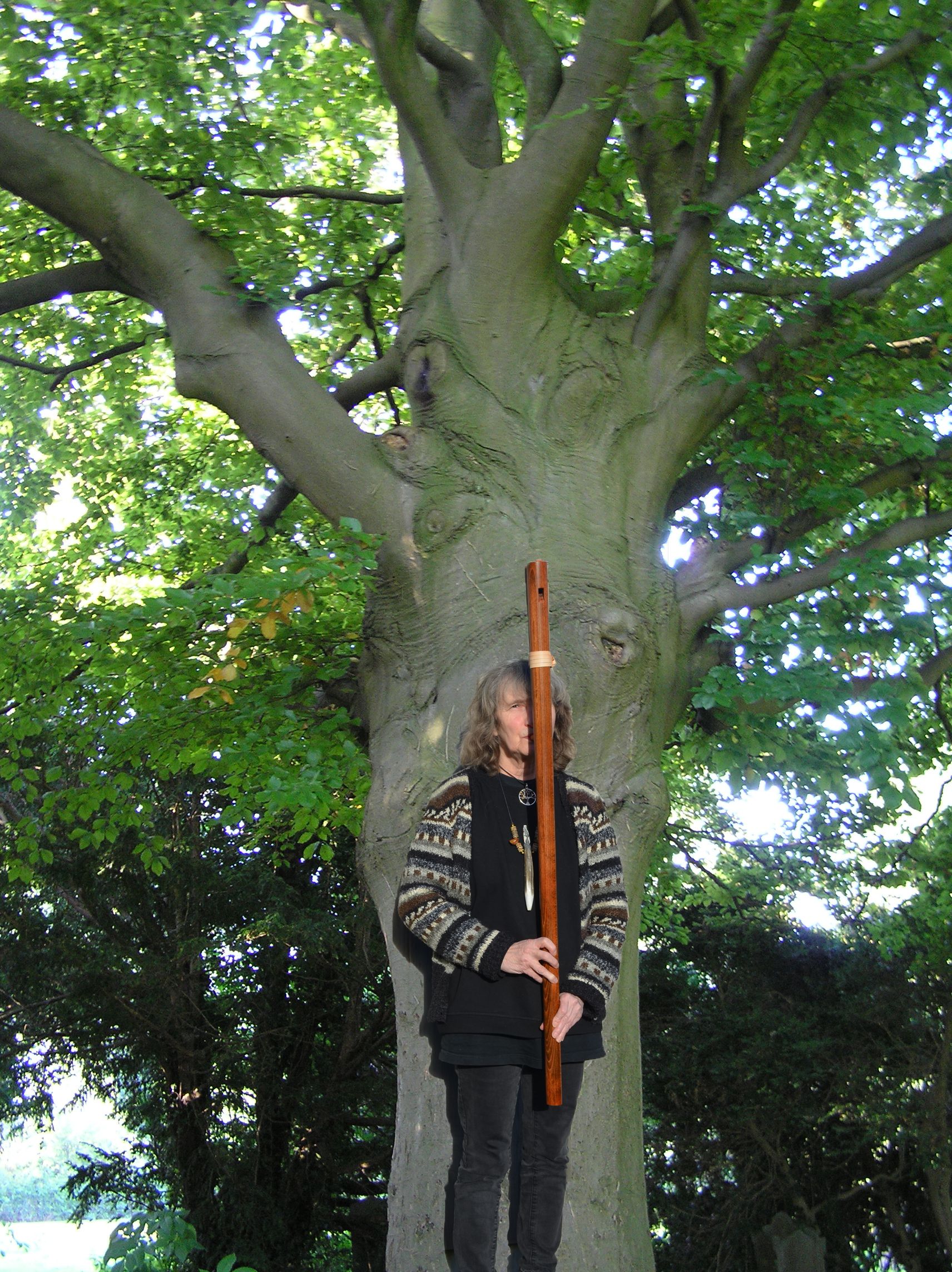Jakub Šaray
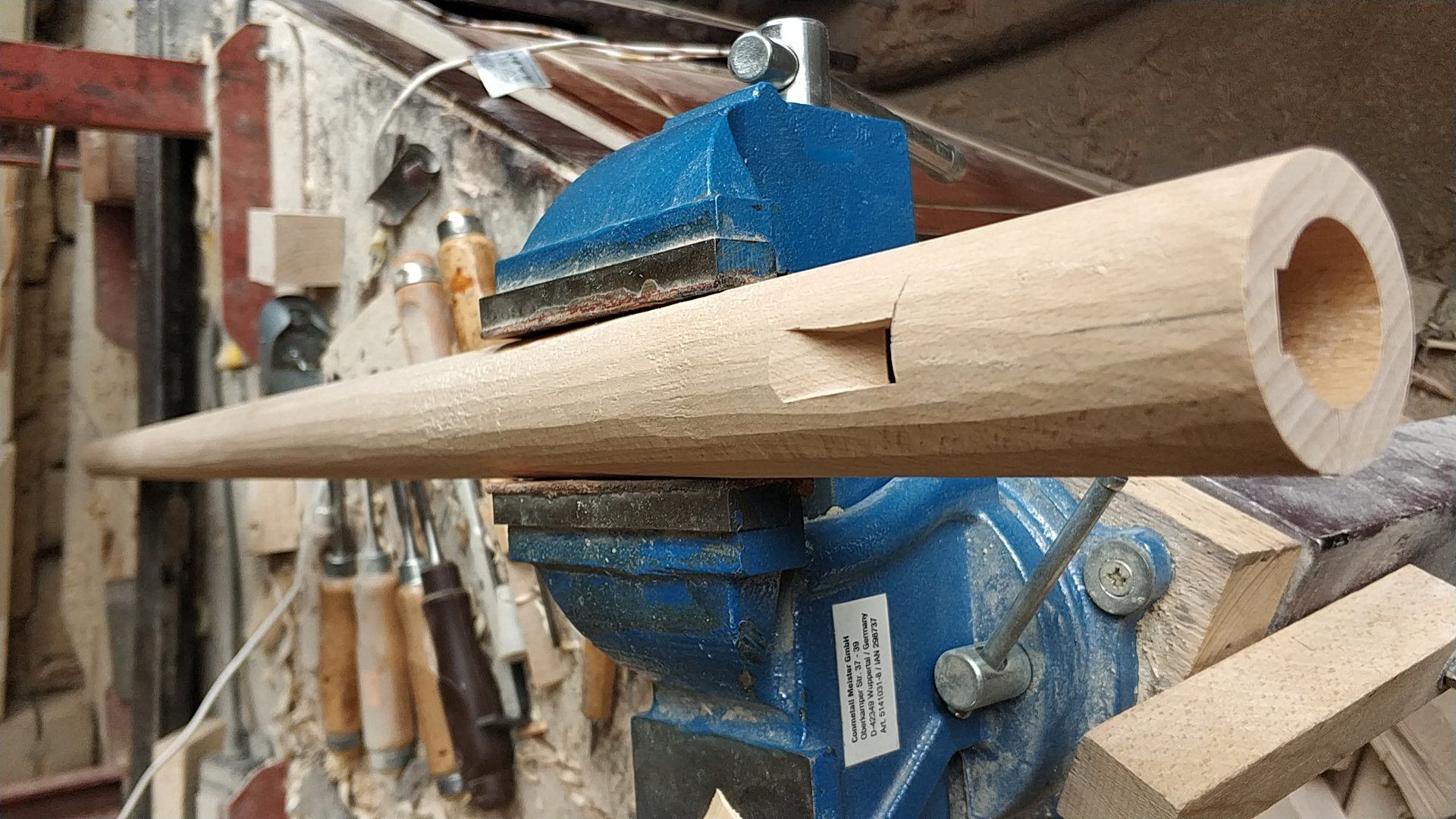
De Fujara
The fujara is a large wind instrument of the tabor pipe class. It originated in central Slovakia as a refined overtone flute of a the music is connected with the shepherds it is a unique design in the double bass range. Length varies depending on the tone. It has three tone holes (also called finger holes) at the bottom of the root. The sound is produced by a fipple at the top of the fujara's main body. The air is led to the fipple through a smaller parallel pipe, called vzduchovod in Slovak (meaning "air duct"), mounted on the main body of the instrument. While it is possible to play the fundamental frequency on fujaras, the normal playing technique is based on overblowing the instrument. Due to the large length versus small internal diameter, the player can use overtones to play a diatonic scale using only the three tone holes. The fujara is usually played standing up, with the instrument held vertically and usually held against the right thigh.
Added to UNESCO as a National Heritage in 2008.
Jakub Šaray
Lives in Slavakia in Poluvsi
He has been making fujaras since 2006 he started producing fujaras when he was in high school where he studied musical instrument production and fell in love with fujara and its sound Ideal wood for fujara is elderberry it is tough and has a well inside, which makes it easier to drill. Most of his instruments are made of elderberry, but he also uses maple, ash my flute is made of beech wood and finished with special stain as color and hardwax oil in 4 layers and are non-toxic Making a fujara takes 2-8 weeks, depending on the complexity of the chosen fujara. The entire process is carefully handcrafted in his studio.
(Source website Etsy )
2023 Nr. 074 D

A small picture of a large flute. My flute is in D and has a length of 118 cm. I am 158 cm tall and I can play it well.
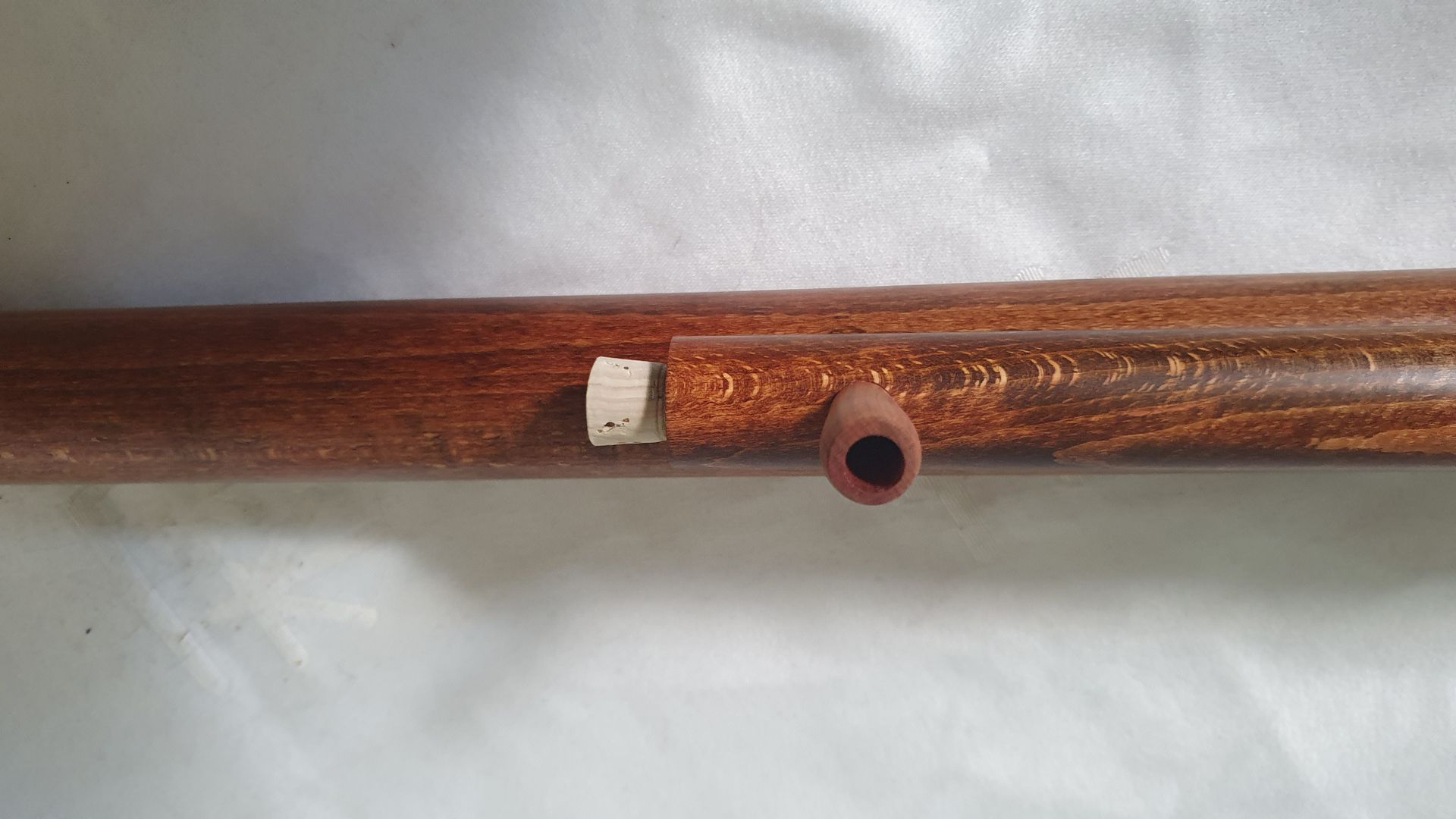
The mouthpiece is loose and is placed so that the air in the small tube is blown upwards. Under the leather wrapping is the connection that connects the large with the small tube.
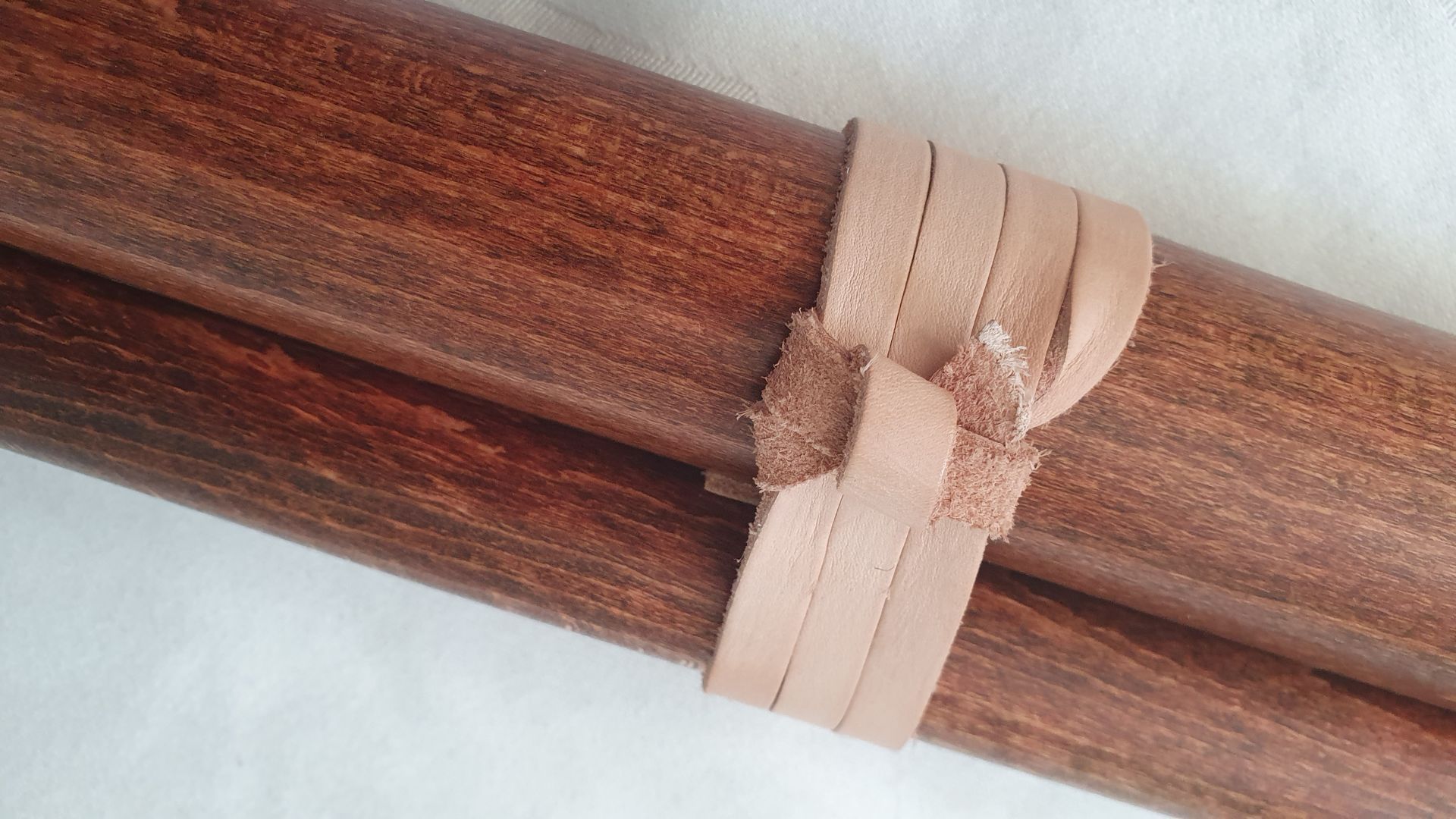
The order
A few years ago I first heard the magical sound of the Fujara with the Druide played by Steve Robbers. Last year I met him again and was allowed to try out this instrument. His instrument was too big for me to play comfortably because I have to take physical complaints into account. When I saw Jakub Šaray's Fujara on facebook, I contacted him and consulted with him, I chose the D and it is perfect for me.
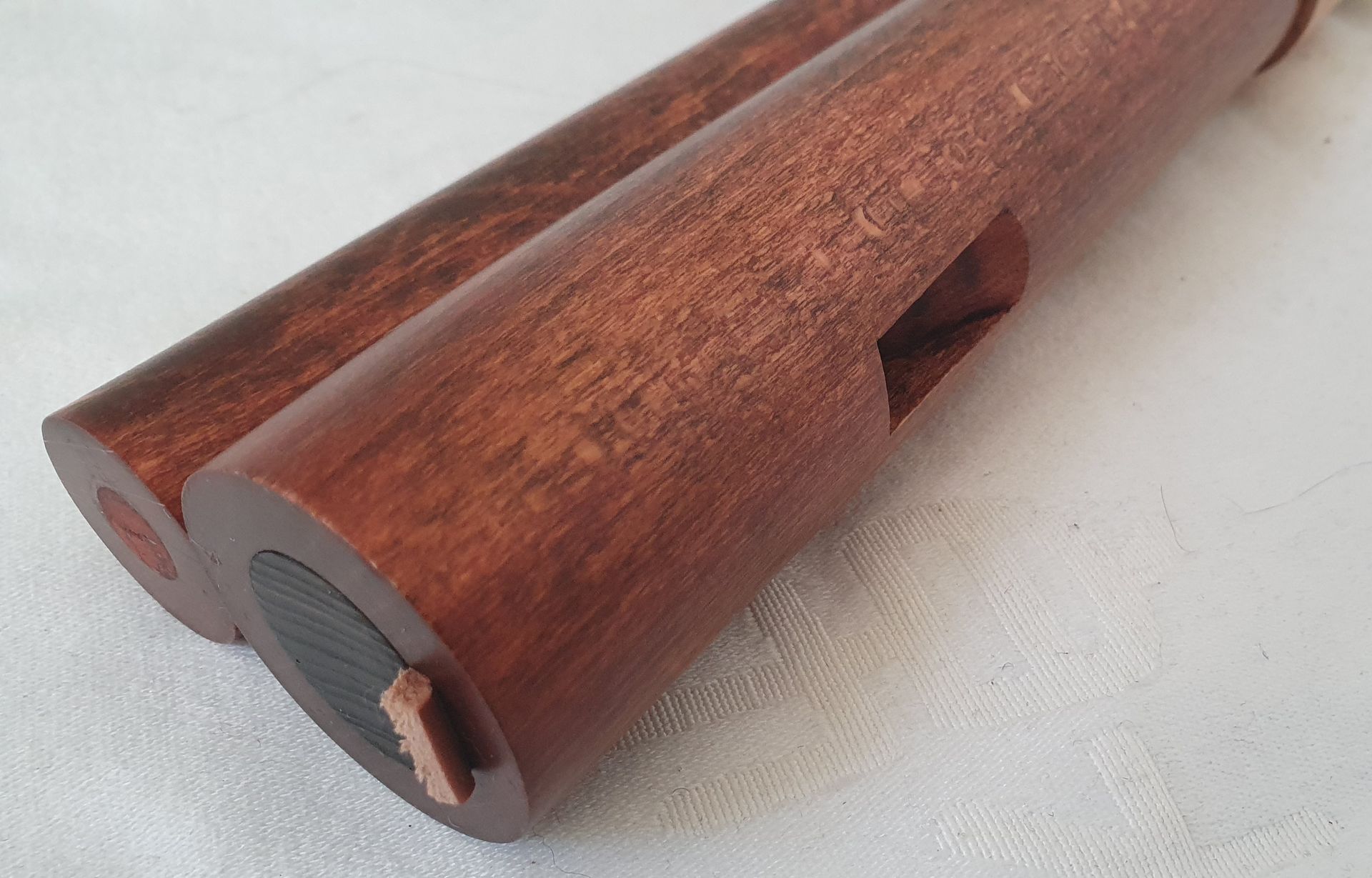
Ordered via Facebook and am now the happy owner of this beautiful flute.
Many of his flutes can also be found on the Etsy website. You do not have to pay import costs within the EU. The price also included a cover with carrying space, very handy if, like me, your only means of transport is a bicycle.
The tree
This flute is made of beech wood
The beech can grow up to 46 meters high. The trunk is smooth and gray and the bark is thin, making the tree susceptible to bark burn when suddenly exposed to sunlight. The leaf is feather-veined, slightly wavy and slightly glossy.
The plant is monoecious; so there are male and female flowers on the same tree. The buds are elongated and scaly. Pollination takes place by the wind. The beech can withstand shade well. It's a climax type.
The beechnuts are enclosed by a cupule, which is formed from the carpels and bracts. There are two nuts in each cup. When the nuts are ripe, the cupule opens into four parts and the beechnuts fall to the ground. The beechnuts are spread by squirrels, among others, who use them as winter supplies. Beechnuts, which are counted among the real nuts, are suitable for human consumption.
The beech thrives on moist, well-drained, calcareous, loamy soil. It does not tolerate high water levels or dry sandy soils. The tree lives in symbiosis with the fungus mycorrhiza. (source wikipedia)
Here's a photo with the flute, a bit photoshopped
because the tree is in West-Souburg and the photo of me was taken in Oostburg
